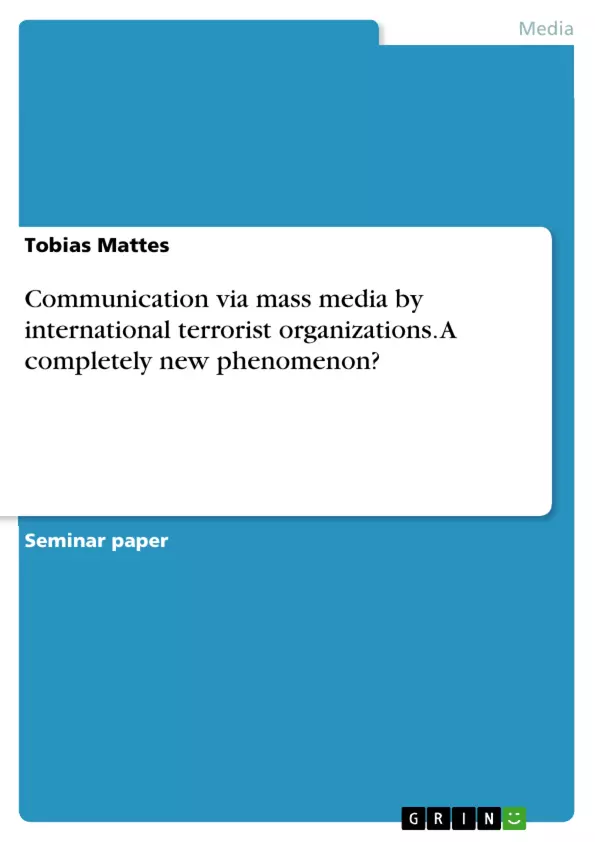This scientific essay aims to demonstrate that using mass media by international terrorist organizations is not a new phenomenon of the 21st century. In fact, the use of media as a weapon by terrorists is nothing new at all. The essay shows the most important terms in this context and explains the communication strategies of modern terror. There are parallels drawn between the actions of the “Rote Armee Fraktion” in the past and the “Islamic State” in the present. Finally, the author suggests that further empirical studies on the effectiveness of the use of mass media by terrorists would be a sensible continuation.
Inhaltsverzeichnis (Table of Contents)
- Introduction
- Introduction to the theme
- Research question
- Limitations and organization of the research
- Terrorism, communication and mass media – definition
- Terrorism
- Communication
- Mass Media
- Symbiotic relationship of mass media and terrorism
- Terrorist media communication strategies
- Historical view on the example of the RAF
- General information about the RAF
- Relationship between RAF and the mass media
- Recent developments using the example of ISIS
- General information about the ISIS
- Relationship between ISIS and the mass media
- Conclusion and suggestions for further research
- Conclusion
- Suggestions for further research
- Bibliography
- Appendix
Zielsetzung und Themenschwerpunkte (Objectives and Key Themes)
This scientific essay aims to demonstrate that the use of mass media by international terrorist organizations is not a new phenomenon of the 21st century. It examines the historical and contemporary strategies of terrorist communication through mass media, highlighting the symbiotic relationship between the two.
- The historical evolution of terrorist communication via mass media
- The communication strategies employed by terrorist organizations
- The role of mass media in shaping public perception of terrorism
- Comparative analysis of the communication strategies of the 'Rote Armee Fraktion' and the 'Islamic State'
- The potential for further research on the effectiveness of terrorist media communication
Zusammenfassung der Kapitel (Chapter Summaries)
The introduction provides a context for the essay by recounting the Paris attacks of 2015 and highlighting the role of media in disseminating news of the events. It establishes the research question: Is communication via mass media by international terrorist organizations a completely new phenomenon?
Chapter 2 defines key terms related to terrorism, communication, and mass media, emphasizing the symbiotic relationship between terrorism and media. The essay then explores the communication strategies employed by terrorist organizations, drawing on historical examples.
Chapter 4 examines the 'Rote Armee Fraktion' (RAF), a German terrorist group, and analyzes their relationship with the mass media. Chapter 5 focuses on the 'Islamic State' (ISIS), comparing their communication strategies to those of the RAF.
Schlüsselwörter (Keywords)
This essay focuses on the use of mass media by international terrorist organizations, exploring the communication strategies employed by groups like the 'Rote Armee Fraktion' and the 'Islamic State'. It examines the historical development of this phenomenon and highlights the symbiotic relationship between terrorism and media. Key terms include terrorism, communication, mass media, propaganda, media strategy, and terrorist communication.
- Quote paper
- Tobias Mattes (Author), 2017, Communication via mass media by international terrorist organizations. A completely new phenomenon?, Munich, GRIN Verlag, https://www.grin.com/document/421020



